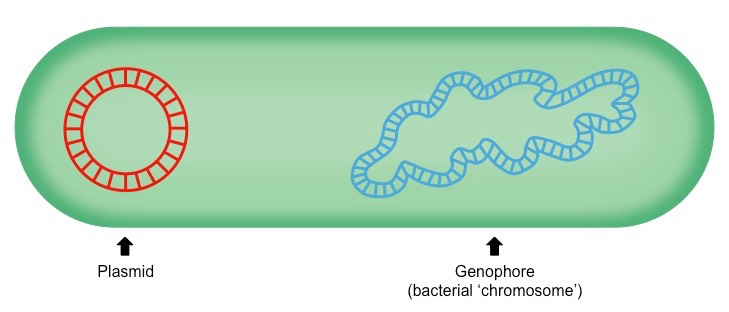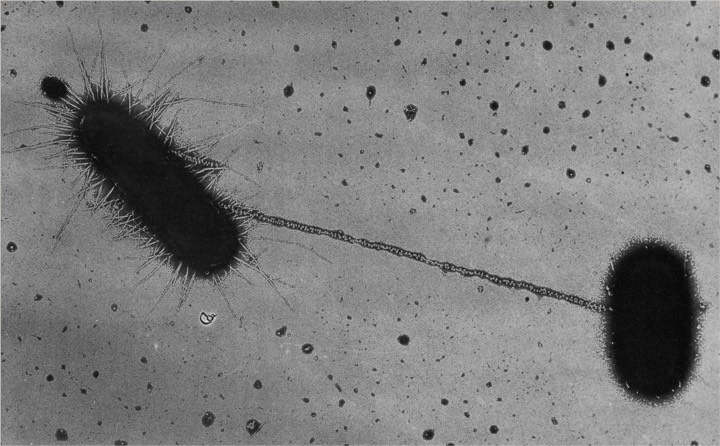![]()
Understanding:
• Prokaryotes have one chromosome consisting of a circular DNA molecule
Prokaryotes do not possess a nucleus – instead genetic material is found free in the cytoplasm in a region called the nucleoid
The genetic material of a prokaryote consists of a single chromosome consisting of a circular DNA molecule (genophore)
- The DNA of prokaryotic cells is naked – meaning it is not associated with proteins for additional packaging
In addition to the genophore, prokaryotic cells may possess additional circular DNA molecules called plasmids
Genetic Material in a Prokaryotic Cell

![]()
Understanding:
• Some prokaryotes also have plasmids but eukaryotes do not
Plasmids are small, circular DNA molecules that contain only a few genes and are capable of self-replication
- Plasmids are present in some prokaryotic cells, but are not naturally present in eukaryotic cells
Bacterial cells may exchange plasmids via their sex pili, in a process known as bacterial conjugation
- This exchange of genetic material allows bacteria to evolve new features within a generation (horizontal gene transfer)
As plasmids can self-replicate and autonomously synthesise proteins, they are ideal vectors for gene manipulation in labs
Overview of Bacterial Conjugation

Micrograph of Bacterial Conjugation via Sex Pili

